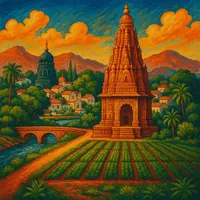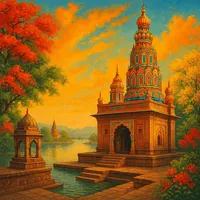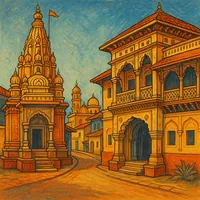Sirūr, located in Mahārāshtra’s Pune district, is uniquely defined by its historic connection to the Maratha Empire as a key military outpost near the Bhima River. What sets it apart is the centuries-old Sangameshwar temple at the confluence of the Bhima and Ghod rivers, making it a rare spiritual and geographic landmark. Its role in historic trade routes and annual riverbank fairs gives Sirūr a cultural rhythm unmatched elsewhere in the region.
Notable points about Sirūr
- Sirūr in Mahārāshtra stands out for its unique blend of ancient Maratha history and its riverside market culture centered around the Bhima River.
- Unlike larger cities, Sirūr retains its agrarian roots while hosting weekly haats that attract villagers from surrounding areas, offering a raw slice of rural Mahārāshtran life.
- The best time to visit is from November to February when the weather is cooler and perfect for exploring temples and open-air bazaars.
- Sirūr is highly affordable, with meals, transport, and lodging costing a fraction of what you'd pay in Pune or Mumbai—great for budget-conscious travelers.
- Attend the annual fair at Shri Mallikarjun Temple in the old town—locals gather for rituals, folk music, and traditional dances rarely seen by outsiders.
- Don't miss the spicy misal pav and crispy bhajis at roadside dhabas—local favorites that define Sirūr’s humble yet delicious food culture.
- Best explored on foot or by rickshaw; the old bazaar lanes and riverbanks are compact but packed with color, chatter, and sensory overload.
- Visit the nearly hidden Shingate Wada ruins, tucked behind the market street—a crumbling Maratha-era structure known mostly to locals.
- Sirūr is safe and friendly, but English is rarely spoken—learn a few Marathi phrases and always remove footwear when entering homes or temples.
- Watching the sun set behind the Bhima River while children fly kites and elders sip tea on the ghats offers a serene, unforgettable slice of daily life.



